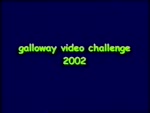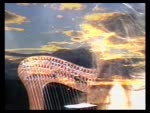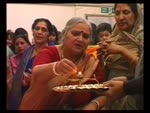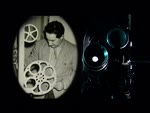ROMANS STOPPED AT BOWLING, the
Please read Understanding catalogue records for help interpreting this information and Using footage for more information about accessing this film.
Title: ROMANS STOPPED AT BOWLING, the
Reference number: 9544
Date: 2000c
Director: filmed by Andy Allan, Ronnie Armstrong, Janette Barnes, Sean Brady & Dave Watson
Sound: sound
Original format: unknown
Colour: col
Fiction: fiction
Running time: 127.57 mins
Description:
A play by Dumbarton People's Theatre about the history of the Dumbarton area, from the arrival of the Romans to the 20th century
Information from Donor:
This production was made as our contribution to the local Millennium celebrations in 2000. The Antonine Wall terminated at what is now Old Kilpatrick slightly up-stream from Bowling and it is more than likely that the Roman Army made use of Dumbarton Rock as an outpost.
The light-hearted story line is that a couple of students of the future are tasked to find out and record the significant events and lifestyles in Scotland, and in particular around the Clyde and River Leven, in the first two millennia of the Christian Era.
See also refs. 9342, 9343 and 9545 for other titles in this collection
Credits: DPT Dumbarton People's Theatre
Shotlist:
DPT DUMBARTON PEOPLE’S THEATRE - title - TWO STUDENTS OF THE FUTURE EMBARK ON A JOURNEY THROUGH TIME - a play about the history of the Dumbarton Area. A man and a woman discuss the premise of the play before a woman sings a song about the Romans. Another man wearing a graduation cap discusses the first 2000 years of the history of Dumbarton. The origins of the name of the town, the Roman occupation and Antonine Wall, post-Roman invasion and the blind poet Ossian. The two main characters return, talking to the audience, about the time-line of the area. The myth of the Elephant of Dumbarton. Two characters arrange for the people of planet Zon to help tell the story. Characters from different centuries arrive and explain the history of the area. The Picts are discussed as well as Inchcailloch, which was the site of a nunnery. The religious figures drawn to the area are discussed including St Mungo. A group of men dressed as Vikings. King Haakon, Malcolm II King of the Scots and the merging of the Kingdom of Strathclyde with Scotland. William Wallace and the Scottish Wars of Independence. Robert the Bruce monologue about his place in history. The place of Dumbarton as a departure point of armies is discussed. Mary Queen of Scots’ army arrives on stage to re-enact a battle. Mary Queen of Scots on stage and her tour of Scotland and stay at Dumbarton Castle is discussed. Mary talks about being sent to France as a child. Mary’s ladies in waiting discuss Lord Darnley and Lord Boswell. The arrival of Protestantism and religious changes in Scotland. Levengrove House and park is discussed before shipbuilding is discussed. The bleaching and dyeing industry, the visit of Queen Victoria, the Highland Clearances and potato famine, immigration and emigration, the rise of football and the effect of the two world wars on Dumbarton. Contemporary entertainment and pursuits are discussed. Argyll Motors and later use of the factory for munitions. Workers of the factory include John Logie Baird and Oliver Hutchinson. Dumbarton’s whisky production. The Dumbarton shipbuilding industry and William Denny are discussed as well as the Cutty Sark. Actors playing shipbuilders tell their story. Different characters from history meet each other. The play ends with a song about Dumbarton Rock.






